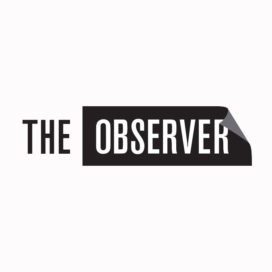Notre Dame MBA at 50: A look at the program’s evolution
Published: September 11, 2017 / Author: Angela Sienko

It’s been 50 years since Notre Dame launched its MBA program, and in that time, the class size has almost tripled, increasing from 50 in 1967 to 131 in 2017. And when the inaugural MBA class arrived on campus, it was comprised entirely of men, whereas today, nearly 30 percent of the classes are comprised of women.*
The Notre Dame MBA Class of 1969 included young men from varying backgrounds: Some were seeking grad school deferments from the war; others were Vietnam vets. There were some Notre Dame alumni and there were select businessmen who had a few years of experience as an accountant or salesman. Some men were seeking corporate positions while others were recent college graduates waiting to run a family business. Qualifications for the inaugural MBA class varied drastically, including some with exemplary transcripts from their undergraduate institutions and others who just barely scraped by.
Even though it was considered an audacious move for a small Catholic University like Notre Dame to introduce an MBA program, the time seemed right to then Dean Thomas Murphy and his assistant John Malone. The nation’s economy had gained steam after World War II, and it was a time of increasing demand for “broadly educated but rigorously trained employees who could assume managerial positions.”
Notre Dame’s College of Business Administration, as it was known, previously had created a business training program for administrators in nonprofit and Catholic organizations in the early 1950 — a precursor to the Master of Nonprofit Administration program. But Dean Murphy and his assistant, Malone, envisioned something much greater. “We thought it time to join the major leagues, time to play big-league ball,” said Malone.
“In the mid-1950s and early 1960s, existing MBA programs were growing twice as fast as undergraduate business or master’s degrees in general, with some 7,000 MBAs awarded in 1962—an 85 percent increase over 1955.”
Today, some 7,200 students with backgrounds in business, english, engineering, economics, math and science, have graduated from the Notre Dame MBA program at the Mendoza College of Business.
Today’s MBA student averages a GMAT score of 686 and an undergraduate GPA in the 3.3 range. They’ve gone on to rise to C-suite positions, start tech companies, take over family businesses, found wineries and microbreweries, reinvent the online florist industry and establish sustainable farms on rooftops in New York.
But the program’s growth goes far beyond demographics and career statistics: In the fledgling program’s earliest phase, students arrived for class at 8:30 a.m. and stayed until 4 or 5 in the afternoon, with teachers rotating in to teach different subjects. Today, as a new MBA student you begin your experience not by studying subjects, but by studying themselves through the Integral Leadership Development course, which is taught during orientation.
Before classes begin, leadership experts walk you through a series of in-depth, experiential courses designed to help you better understand your core values and personal leadership style. The goal: to help you positively impact your student team, your organization and the greater business community.
Throughout the remainder of the program, today’s curriculum includes several opportunities for students to participate in non-traditional learning experiences that go beyond standard business foundations — and even beyond our borders. Here are just a few examples:
Business Analytics
The Business Analytics Curriculum provides a powerful skill set to help drive forward the careers of our students. From required courses and individual electives to the Business Analytics Concentration and Dual Degree Program, Notre Dame offers the right level of rigor and flexibility to suit the needs of our students.
Interterm Intensive
Explore corporate life based on your professional interest. Students can consult with a real-life nonprofit organization; immerse themselves into the business world in China, Brazil or Chile; or strengthen their business toolkit by learning from industry experts working with Fortune 500 executives to solve real-world corporate social responsibility issue
Applied Investment Management
For students taking the finance track, this course allows them to manage a live stock portfolio that is comprised of more than $10 million of the University of Notre Dame’s endowment.
Business on the Frontlines
Business on the Frontlines examines the impact of business in post-conflict societies. Students have the opportunity to partner with nonprofit organizations and multi-national companies to harness the dynamism of businesses to rebuild these communities before they tip back into conflict.
As we continue to celebrate the Notre Dame MBA 50th Anniversary throughout the year, we encourage you to learn more about the program and its enduring legacy. Be sure to watch for additional communications about the program and its history by visiting mba.nd.edu.
*Females weren’t permitted to attend Notre Dame until 1972.
History of the Notre Dame MBA program excerpted from O’Hara’s Heirs: Business Education at Notre Dame (1921-1990), by Kerry Temple (ND ’74), Notre Dame Magazine editor.
“First Class” excerpted from Notre Dame Business Magazine, Winter 2010, by Nancy Johnson.
Related Stories




